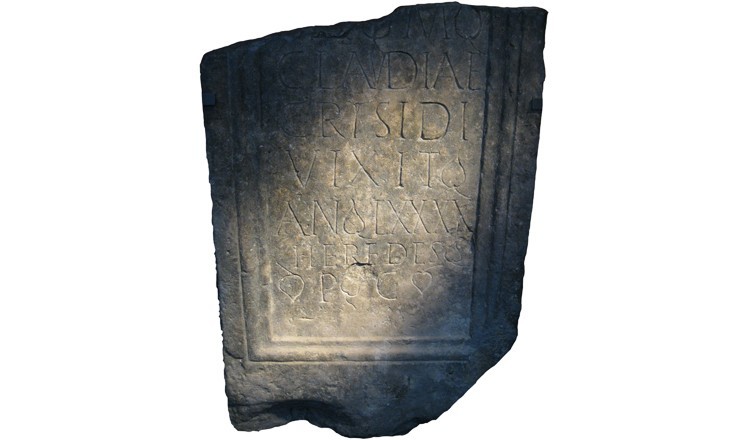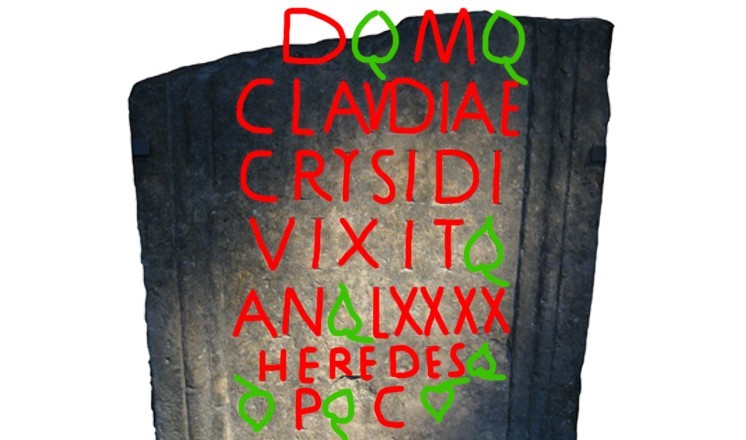Claudia Crysis - Roman Britain’s oldest woman
RSS FeedHer tombstone was discovered in 1830 on Lindum Road and donated to the museum in 1910. The tombstone had been rebuilt into the later city wall. Her original burial place was most likely the cemetery outside the city gates on what is now Monks Road, but like many tombstones hers was later seen as little more than usable stone when the city walls were being enlarged in the 4th Century.
The tombstone itself is very simple, but well carved. Sadly it does not bear an image of Claudia herself but is instead decorated with small leaf designs. The Latin inscription reads:
D M
CLAUDIAE
CRYSIDI
VIXIT
AN LXXXX
HEREDES
P C
This contains a number of common abbreviations found on tombstones. The first letters, D and M, are short for ‘Dis Manibus’, meaning ‘to the spirits of the departed.’ This is a standard phrase used to appease the spirits of the underworld. Claudia’s name appears on the following two lines.
‘Vixit’ simply means ‘lived’ and ‘an’ is short for ‘annos’, meaning ‘years’. Following these is the Roman numeral ‘LXXXX’, meaning 90. There was a tendency on Roman tombstones to round ages up or down, so we cannot be certain that Claudia was exactly 90 when she died. She could easily have been 88, 89 or even 91 or 92!
The final two lines should be read together, though ‘P C’ is an abbreviation. The full sentence reads ‘HEREDES PONENDUM CURAUERUNT’, and translates as ‘Her heirs had this (tombstone) set up.’
Using this inscription we can start to say something about Claudia’s life. The quality of her tombstone and her long life suggest that she was wealthy. Life expectancy in the Roman world is difficult to calculate because of high infant mortality and the great variance in lifespan between rich and poor, but most people would have been very lucky indeed to see their 70th birthday, and many working class Romans would not have lived much past 40. Claudia’s age is therefore exceptional, and must indicate that her diet and living conditions were good.
Claudia must therefore have belonged to a wealthy family in 2nd Century Lincoln, and have been able to live a luxurious Roman life with fine quality food, slaves to take care of the harder work and access to the finest healthcare of the day. Perhaps, in her later years, she was a 'mater familias' - an indomitable old lady commanding the various younger generations of her family, who dutifully set up her tombstone after she had passed away?
Comments
There aren’t any comments for this blog yet


